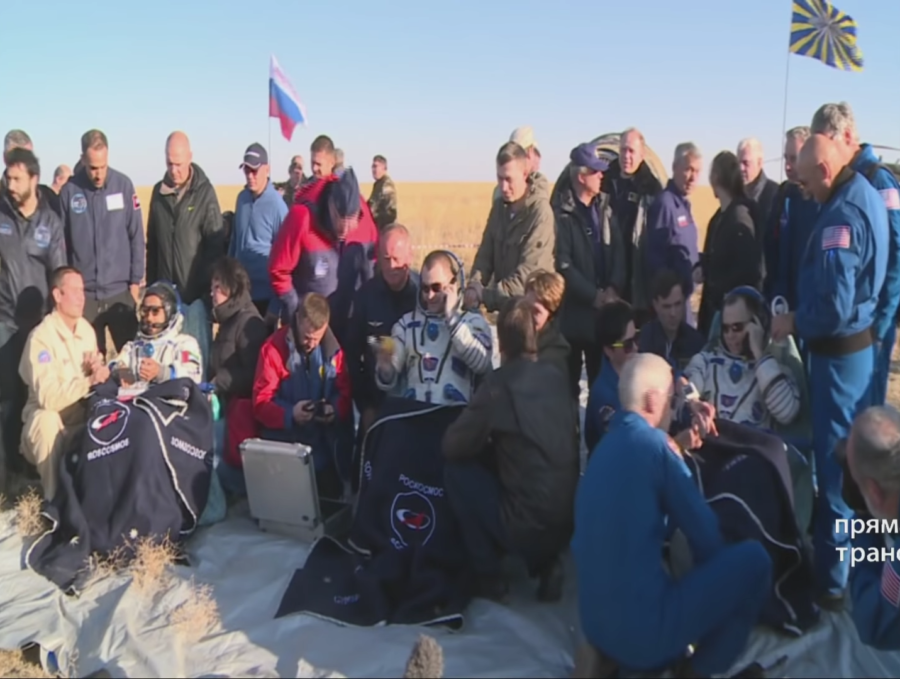Two Landings and a Year Later, Nick Hague and Alexey Ovchinin Finally Complete Their Mission
On Oct 3, Soyuz MS-12 landed in the desert steppes of Kazakhstan, completing an almost year-long space Odyssey for both Nick Hague and Alexey Ovchinin.
The beginning of Hague and Ovchinin’s odyssey began during their preparations for the Soyuz MS-10 launch from the Baikonur Cosmodrome in Kazakhstan. Originally, the flight crew for the mission consisted of Commander Alexey Ovchinin (Roscosmos), flight engineer-1 Nikolai Tikhonov (Roscosmos), and flight engineer-2 Nick Hague (NASA).
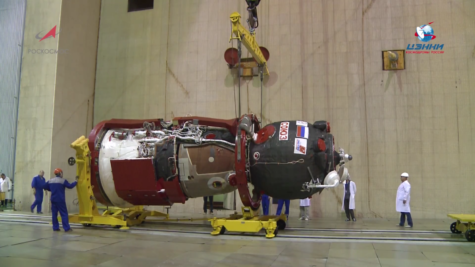
During training, it was decided that Tikhonov would not fly. Instead, only Hague and Ovchinin would fly, with a spare seat filled with cargo and Hague now filling the role of flight engineer-1.
Hague and Ovchinin were schedueled to launch abord a Soyuz-FG rocket, which is a variant of the Soviet R-7 ICBM to the International Space Station (ISS). After arrival to the ISS, Hague and Ovchinin were to begin Expedition 57 with the crew of Soyuz MS-09 consisting of Sergey Prokopyev (Roscosmos), Alexander Gerst (ESA), and Serena M. Auñón-Chancellor (NASA).
On Oct 11, 2018, Hague and Ovchinin climbed into their Soyuz MS-10 spacecraft at Site 1/5 at the Baikonur Cosmodrome. Under the callsign “burlak,” the Soyuz-10 spacecraft and Soyuz-FG booster lifted off from the pad and headed skyward.
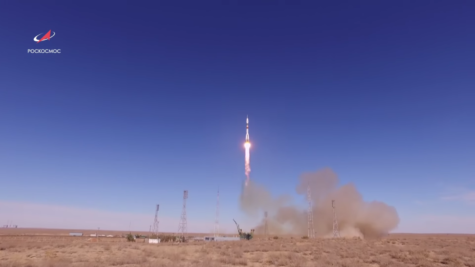
All was well until first stage separation when a booster impacted the booster, punching a hole in a tank on the second stage of the rocket. This caused the rocket to tumble and disintegrate, triggering the launch escape system to pull the crew to safety.
“It went from normal to something was wrong pretty quick. It was one bumpy roller-coaster ride, a lot of side-to-side motion, being tossed around, but it was over almost before it started,” said Hague according to Space.com.
During the abort, the crew reached a height of 93 km or 58 miles above the Earth. Hague and Ovchinin then landed near the town of Jezkazgan, Kazakhstan. The flight lasted a total of 19 minutes and 41 seconds.
By the time the Russian recovery forces made their way to the landing site, they found the Soyuz MS-10 decent module on it’s side with both Ovchinin and Hague already outside the spacecraft talking and telling jokes.
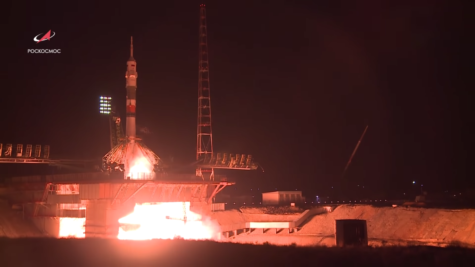
In the aftermath of the incident, Ovchinin headed back to Moscow while Hague went back to Houston, TX. Once the investigation was complete, they were reassigned to the Soyuz MS-12 flight with Christina Koch (NASA) joining the two.
Prior to the Soyuz MS-12 launch, Hague and Ovchinin once again headed back to the Star City, Russia, which is located on the outskirts of Moscow, this time with Koch as an additional crew member.
On March 14, 2019, Ovchinin, Hague, and Koch launched aboard Soyuz MS-12 from Site 1/5. The flight preformed nominally and the crew of three reached Earth orbit. Hours later, Soyuz MS-12 made a successful rendezvous and docking to the Rassvet module on the nadir facing side of the ISS.
Once the hatch opened, the new crew joined the crew of Soyuz MS-11 consisting of Oleg Kononenko (Roscosmos), David Saint-Jacques (CSA), and Anne McClain (NASA) for Expedition 59. During the Expedition, the crew continued to conduct station maintenance, spacewalks, and scientific experiments.
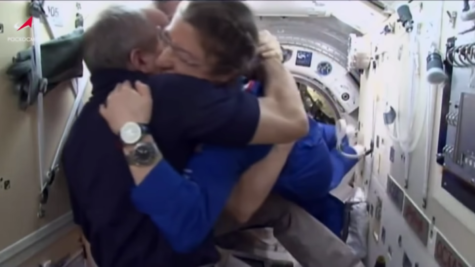
On March 22, Hague and McClain installed adapter plates in preparation for the installation of new station batteries near the solar arrays during a spacewalk.
On March 29, another spacewalk occurred. This one was supposed to be the first all-female spacewalk, but issues with the spacesuit caused Hague to replace McClain, while Koch also participated. During the spacewalk, both Hague and Koch were on the P4 truss completing work left from the previous spacewalk.
A third spacewalk occurred on Apr 8, when Saint-Jacques and McClain rerouted cables for the Canadarm2. They also did some further battery work.
During a Russian spacewalk from the Pirs module, both Kononenko and Ovchinin payed tribute to Russian Cosmonaut Alexei Leonov, because Leonov’s birthday coincided with the spacewalk on May 29. The two men also removed some experiments from the outside of the Zvezda module. Alexei Leonov was the first man to walk in space.
On June 24, the crew of Soyuz MS-11 departed the station. The three person crew of Soyuz MS-12 remained in the station. However, the three person crew would not be alone for long.
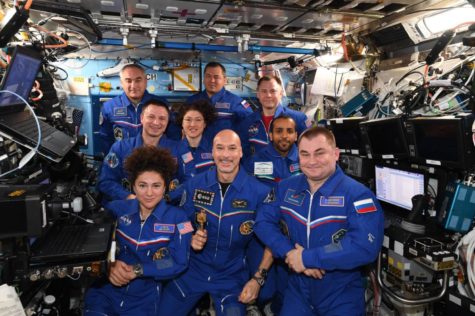
On July 20, the 50th anniversary of the Apollo 11 moon landing, Soyuz MS-13 launched to the ISS from site 1/5. The crew then docked to the aft port of the Zvezda module hours after launch. Aleksandr Skvortsov (Roscosmos), Luca Parmitano (ESA), and Andrew Morgan (NASA) then joined Hague, Koch, and Ovchinin on board the ISS as Expedition 60 began.
On Aug 21, Hague and Morgan preformed a spacewalk, which both men installed the International Docking Adapter-3 (IDA-3) to the Harmony Module. The spacewalk lasted a total of six hours and 32 minutes.
During the Expedition, the unmanned Soyuz MS-14 docked to the ISS on Aug 27 after an aborted attempt the first time which caused the crew of Soyuz MS-13 to move from Zvezda to the Poisk module on the ISS on Aug 26. This was the first Soyuz docking port relocation since Soyuz TMA-16M in 2015.
After testing out the Russian robot FEDOR, Soyuz MS-14 undocked from Zvezda on Sept 6. After making a couple orbits, the spacecraft landed in Kazakhstan near the town of Zhezkazgan, completing its test flight with a launch on a Soyuz 2.1a rocket.
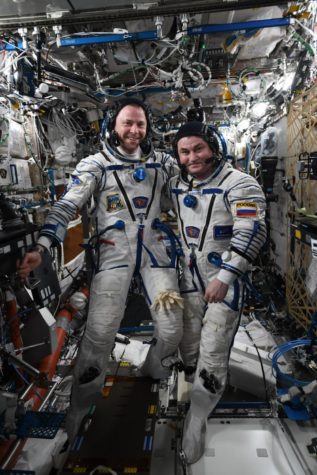
On Sept 25, Soyuz MS-15 launched from site 1/5 on what was the last Soyuz-FG rocket launch, and the last from site 1/5 for the foreseeable future. On board was commander Oleg Skripochka (Roscosmos), flight engineer Jessica Meir (NASA), and spaceflight participant Hazza Al Mansouri of the United Arab Emirates.
For seven days, the ISS was the home to a total of six astronauts and three cosmonauts. On Oct 3, Hague, Al Mansouri, and Ovchinin entered their Soyuz and closed the hatch. Prior to this Ovchinin handed over the command of the ISS to Parmitano.
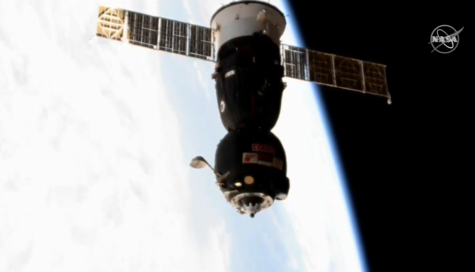
After Soyuz MS-12 undocked, it moved away from the ISS and preformed a deorbit burn. Prior to reentry, the Orbital module and the instrument module on the Soyuz and the decent module with the crew reentered the atmosphere.
Not long after, Soyuz MS-12 touched down in the steppes of Kazakhstan. The decent module landed on its side and nearby the landing site of Soyuz MS-10. The crew were quickly extracted from the capsule and then underwent medical checks.
The crew were then transported to a staging area in Karaganda, Kazakhstan. Hague then took a NASA plane to Houston while Al Mansouri and Ovchinin traveled back to Star City.
On Oct 4, Russian President Vladimir Putin signed a decree awarding both Hague and Ovchinin the Order of Courage for the events of the Soyuz MS-10 launch abort.


